Project specifications are essential documents that define the requirements, standards and expectations for a construction project. They provide detailed information on materials, workmanship, dimensions and quality, ensuring every team member understands the project goals. Clear project specifications help prevent misunderstandings, reduce errors and maintain consistency across all phases of construction.
They also serve as a reference for regulatory compliance and contract management. By establishing measurable criteria, project specifications enable accurate cost estimation, scheduling and quality control, making them a critical tool for project managers, contractors and stakeholders to deliver successful projects on time and within budget.
What Are Project Specifications?
Project specifications are the detailed description of what a project must deliver and how its success will be measured. They translate broad objectives into clear, verifiable terms that define what “done” looks like.
Unlike technical specifications used in engineering or construction, project specifications in general project management aren’t about materials or blueprints—they’re about requirements and outcomes. They clarify what the project will produce, the standards those deliverables must meet and the conditions that must be satisfied for stakeholders to accept the results.
In practice, project specifications bring together two key elements, project requirements and project success criteria. Together, they form a bridge between the project scope and the project evaluation process. A well-defined set of project specifications ensures every stakeholder shares the same understanding of what the final deliverables will include, how performance will be assessed and what quality standards must be maintained along the way. In other words, project specifications serve as the project’s “definition of success,” the baseline against which progress, performance and completion are judged.
Project management software helps teams organize, track and share project specifications efficiently. It centralizes documents, allows version control and ensures all stakeholders have access to the latest updates. By linking specifications to tasks, schedules and budgets, the software reduces miscommunication, enforces compliance and keeps projects aligned with design and quality requirements.
ProjectManager makes managing project specifications simple with features like unlimited document storage, version control and customizable templates. Robust Gantt charts connect specifications directly to timelines and deliverables, linking dependencies and setting a baseline to track work in real time. Dashboards monitor compliance in real time and automated notifications alert teams to changes. Its collaboration tools enable seamless communication while AI-powered reporting highlights inconsistencies or risks in specifications. Get started with ProjectManager today for free.
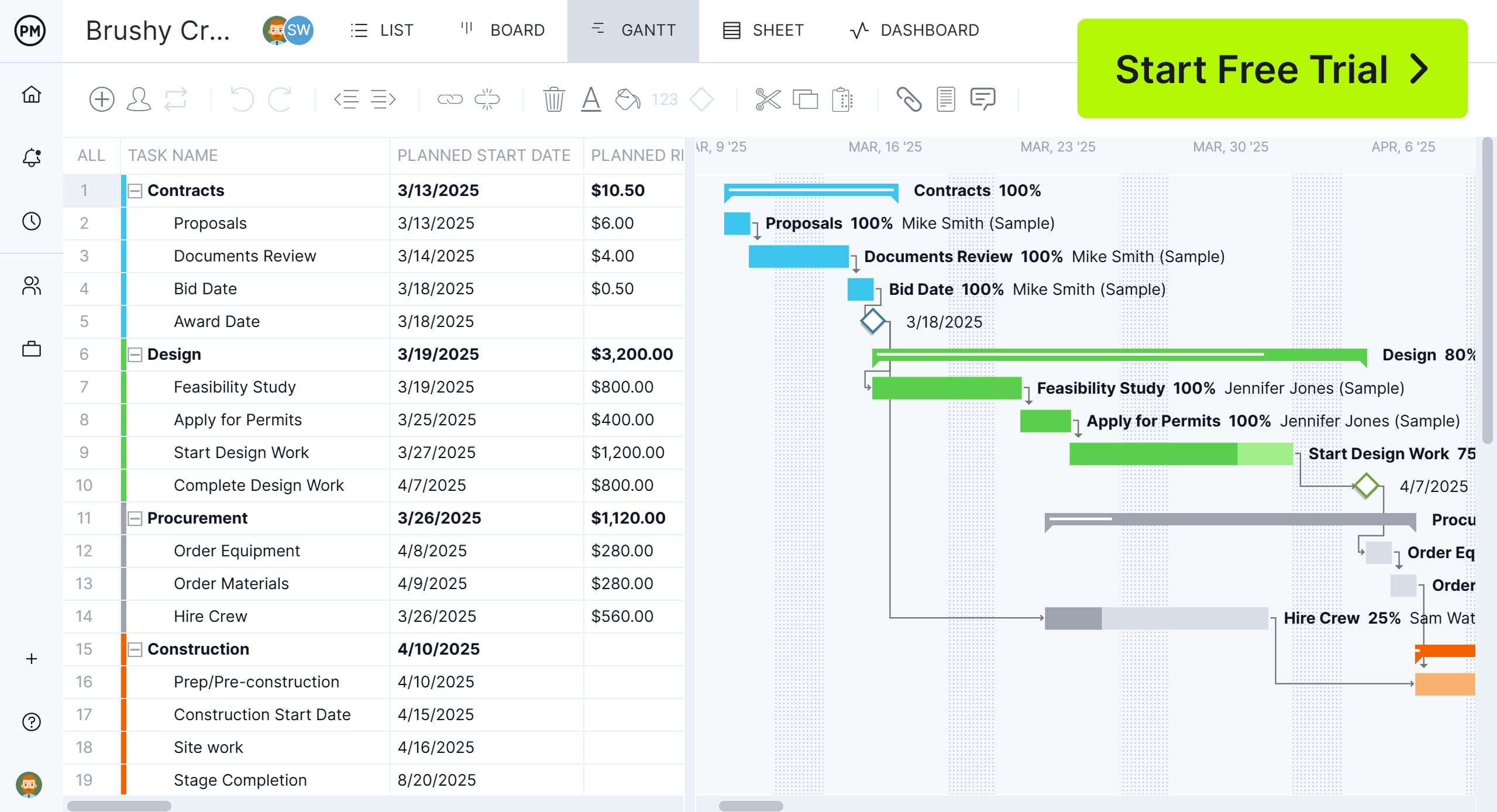
Project Requirements
Project requirements define what a project must achieve and the conditions necessary to meet stakeholder expectations. They guide planning, design and execution, ensuring the team understands the objectives and constraints. Clear requirements reduce risks, improve communication and provide a basis for measuring progress. Well-documented project requirements support resource allocation, scheduling and budgeting, helping teams deliver outcomes that align with business goals, regulatory standards and technical needs while minimizing misunderstandings and costly rework.
- Business Requirements: Outline the high-level goals and objectives that the project must fulfill to meet organizational needs. They focus on value creation, operational improvements and strategic alignment to ensure the project delivers measurable benefits and supports overall business priorities.
- Functional Requirements: Specify the features, behaviors and capabilities the project must provide. They describe what the system, product or service should do to meet user needs and include workflows, interactions and data handling criteria to ensure proper operation.
- Non-functional Requirements: Define the quality attributes, performance levels and constraints of a project. These include usability, reliability, scalability, security and maintainability to ensure the solution operates effectively under expected conditions.
- Technical Requirements: Detail the technology, tools and infrastructure necessary to implement the project. They cover hardware, software, network specifications and integration needs, ensuring the solution meets technical standards and functions as intended.
- Regulatory Requirements: Define the legal, safety and compliance standards the project must follow. They ensure adherence to local, national and industry regulations to avoid penalties and guarantee safe, lawful operations.
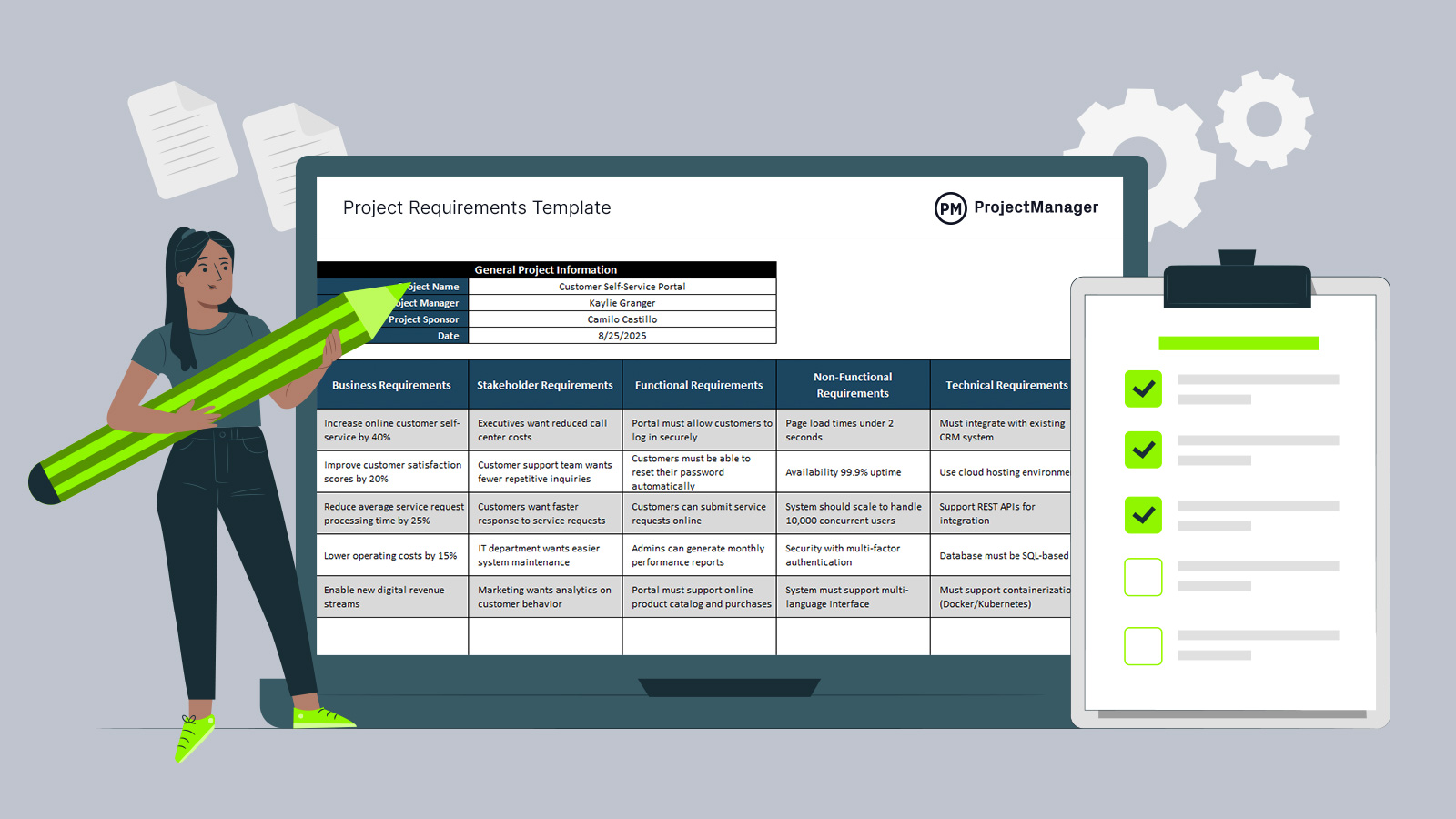
Get your free
Project Requirements Template
Use this free Project Requirements Template to manage your projects better.
Get the TemplateProject Success Criteria
Project success criteria establish the measurable benchmarks to determine if a project has achieved its objectives. They guide decision-making, performance evaluation and stakeholder communication. Success criteria include metrics for scope, schedule, cost, quality, stakeholder satisfaction and strategic impact. Defining these criteria early helps teams prioritize tasks, allocate resources effectively and maintain accountability. By setting clear expectations, success criteria provide a shared understanding of project goals and ensure all aspects of performance are monitored and evaluated throughout the project lifecycle.
- Scope and Deliverables: Defines the project outputs and boundaries, ensuring all tasks, products and services meet stakeholder expectations. A clear scope prevents scope creep and ensures the team focuses on the required deliverables.
- Schedule Management: Establishes timelines, milestones and deadlines for completing project tasks. Effective schedule management ensures work progresses efficiently, resources are allocated appropriately and the project finishes on time.
- Project Financial Management: Sets budgets, tracks costs and ensures spending aligns with projections. Financial management monitors expenses, identifies variances and maintains profitability while supporting resource planning and cost control.
- Quality Assurance and Control: Defines standards, processes and inspections to ensure deliverables meet expected quality levels. QA and QC help prevent defects, maintain compliance and increase stakeholder confidence in the project outcomes.
- Stakeholder Satisfaction: Measures how well the project meets the needs and expectations of clients, users and other stakeholders. High satisfaction ensures continued support, positive relationships and alignment with business objectives.
- Strategic Impact: Evaluates how the project contributes to broader organizational goals and long-term benefits. It ensures alignment with business strategy, supports decision-making and maximizes value from project investments.
What Is the Importance of Project Specifications?
Project specifications are critical documents that define the detailed requirements, standards and expectations for a project. They guide planning, design, execution and quality control, ensuring all team members understand the objectives and constraints. Clear project specifications reduce errors, prevent miscommunication and help maintain consistency across all deliverables.
They also provide a framework for compliance, cost management and schedule adherence. By using project specifications, teams can align resources effectively, track progress against defined benchmarks and deliver outcomes that meet stakeholder expectations while achieving project goals efficiently.
Related: 32 Must-Have Project Management Templates for Google Sheets
How to Manage Project Specifications
Managing project specifications involves a structured approach to ensure clarity, accuracy and compliance throughout the project lifecycle. By following defined steps, teams can capture stakeholder expectations, translate them into actionable requirements and maintain consistent documentation. Proper management of project specifications ensures all team members are aligned, reduces risks of errors, supports change control and allows performance to be measured against clearly defined criteria, ultimately improving project outcomes and stakeholder satisfaction.
Identify Stakeholder Needs
Identifying stakeholder needs is the first step in creating accurate project specifications. This involves gathering input from clients, end users and regulatory bodies to understand expectations, priorities and constraints. By capturing these needs early, project managers can ensure the project specifications reflect the true goals of the project, align with business objectives and anticipate potential risks, which helps guide design decisions and resource allocation effectively.

Define Project Requirements
Defining project requirements translates stakeholder needs into specific, measurable and actionable items within the project specifications. This includes functional, technical, business and regulatory requirements. Clear requirements provide a foundation for project planning, resource allocation, risk management and quality control. Including comprehensive project specifications at this stage reduces misunderstandings and ensures all team members have a shared understanding of what the project must achieve.
Establish Success Criteria
Establishing success criteria ensures project specifications include measurable benchmarks for evaluating performance. This covers scope, schedule, budget, quality, stakeholder satisfaction and strategic outcomes. By defining these criteria, project managers can monitor progress effectively, make informed decisions and ensure the project meets its objectives. Success criteria embedded in project specifications provide a clear reference for performance measurement throughout the project lifecycle.
Document the Specifications In the Project Plan
Documenting project specifications in the project plan centralizes all requirements, expectations and standards for the project. This ensures consistency and accessibility for all team members. Proper documentation provides a reference point for planning, execution, quality control and reporting. Including detailed project specifications in the plan reduces miscommunication, supports regulatory compliance and enables efficient resource allocation and schedule management throughout the project.
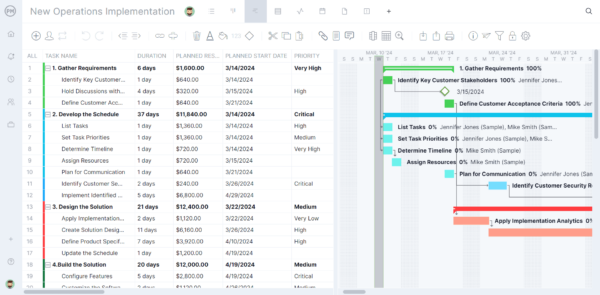
Validate and Get Approval
Validating project specifications and obtaining approval ensures all requirements and standards are agreed upon by stakeholders. This step confirms that the specifications are complete, realistic and aligned with project goals. Approval provides accountability, minimizes scope changes later in the project and serves as a formal reference for project execution. Project specifications approved early reduce risks and enhance confidence in the project plan.
Communicate with the Project Team
Communicating project specifications to the project team ensures everyone understands requirements, responsibilities and expected outcomes. Clear communication minimizes errors, prevents delays and aligns team efforts. By sharing project specifications through meetings, documentation and collaboration tools, project managers maintain transparency and foster accountability. Effective communication of project specifications ensures teams can execute tasks efficiently and deliver results that meet stakeholder expectations.
Monitor Changes and Updates
Monitoring changes and updates to project specifications ensures the project remains aligned with stakeholder needs and regulatory requirements. Any modifications should be documented, reviewed and approved to maintain accuracy. This process helps prevent scope creep, ensures resource and schedule adjustments are managed effectively and keeps the team informed. Keeping project specifications current reduces risks and supports consistent project delivery.
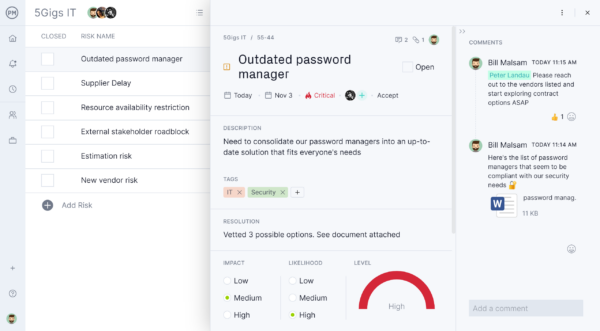
Review and Close-Out
Reviewing and closing out project specifications ensures all requirements have been met and deliverables align with expectations. This step includes verifying compliance, documenting lessons learned and finalizing records for future reference. A thorough review of project specifications at close-out provides accountability, supports auditing and helps inform future projects. It confirms that the project successfully adhered to its defined objectives and standards.
What Free Templates Help Manage Project Specifications?
Managing project specifications is easier with structured templates that organize requirements, responsibilities and tasks. These free templates provide a clear framework for capturing stakeholder needs, defining project requirements and tracking accountability. By using these tools, teams can ensure consistency, reduce errors and maintain alignment throughout the project lifecycle while improving communication and documentation.
Project Requirements Template
Download this free project requirements template to capture functional, technical and regulatory requirements in a structured format. It organizes specifications by category, priority and stakeholder, making it easier to manage complex projects. Using this template ensures that all project requirements are documented, accessible and tracked, supporting accurate planning and execution while reducing miscommunication.
Business Requirements Document Template
Use this free business requirements document template to focus on high-level organizational needs and objectives. It captures goals, constraints and success metrics that the project must achieve. This template links business requirements directly to project specifications, providing clarity for decision-making, resource allocation and compliance. It ensures the project delivers measurable value and aligns with the overall business strategy.
RACI Matrix Template
This free RACI matrix template clarifies roles and responsibilities for each task or deliverable in the project specifications. By defining who is Responsible, Accountable, Consulted and Informed, the template promotes accountability, reduces confusion and ensures tasks are completed efficiently. It is especially useful for coordinating complex projects with multiple stakeholders.
How ProjectManager Helps Deliver Project Specifications Successfully
While templates provide a good starting point, ProjectManager offers dynamic tools that make managing project specifications far more effective. Instead of static documents, teams can collaborate in real time, assign ownership and track progress across tasks directly linked to specifications. Multiple project views—such as Gantt, kanban, sheet and calendar—allow managers to visualize timelines, dependencies and resource assignments from every angle. This flexibility ensures specifications are met on time and within scope, even as project demands evolve.
Optimize Resources and Balance Workloads
ProjectManager’s resource management features help teams allocate people and materials efficiently to meet project specifications. The workload chart displays team capacity in real time, helping managers avoid bottlenecks and over-allocation. The team page provides a centralized hub for viewing assignments, monitoring progress and reallocating resources as needed. This ensures the right people are focused on the right tasks, keeping deliverables aligned with project goals.
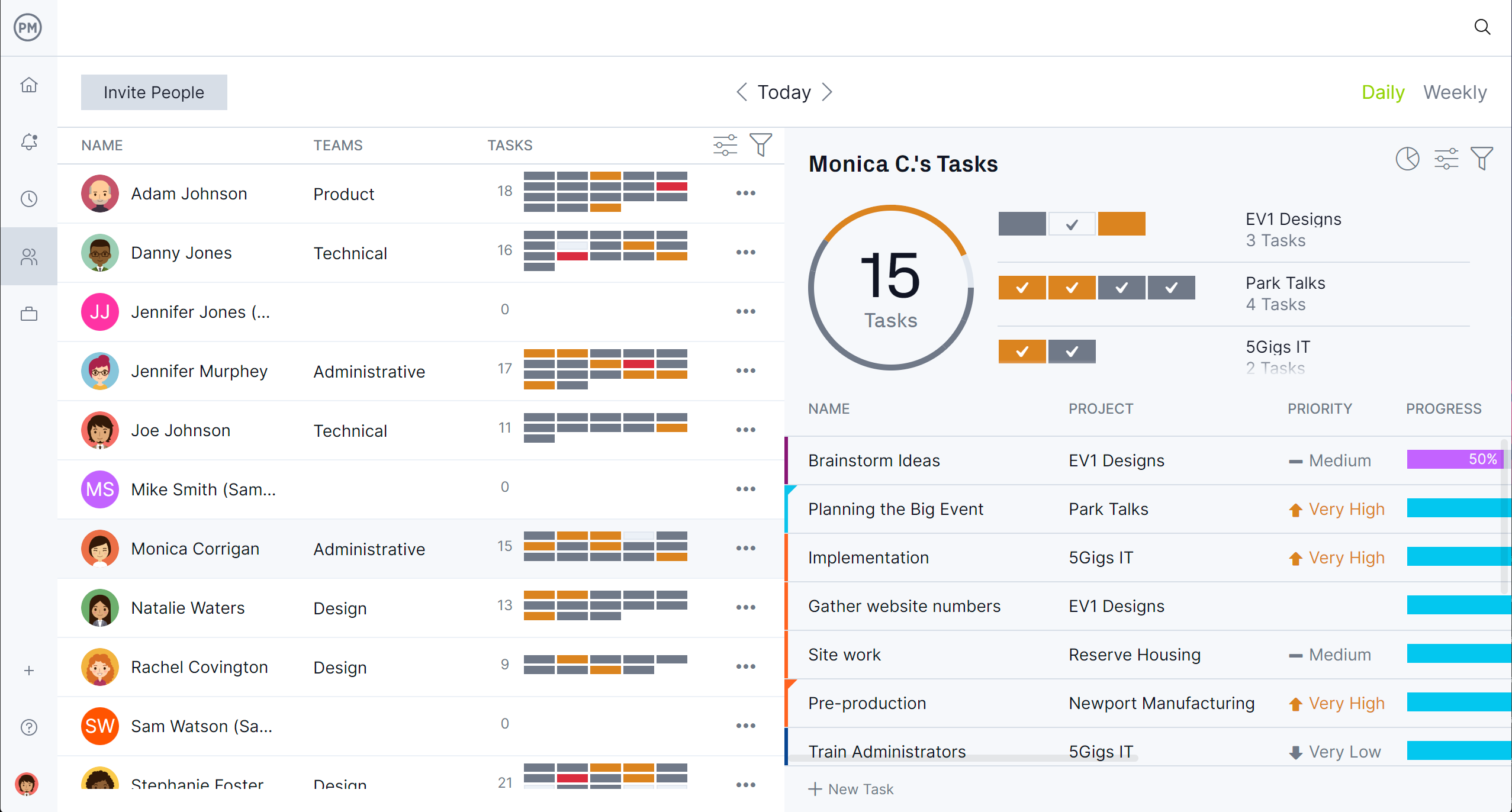
Track Progress and Improve Accuracy
Tracking performance against project specifications is effortless with ProjectManager’s real-time dashboards and AI-powered reporting. Dashboards instantly visualize progress, costs and resource metrics while AI Project Insights suggests performance insights and potential optimizations. Timesheets can be updated from the field through the mobile app, giving managers visibility into labor costs and productivity at every stage. This integrated tracking process ensures that teams stay on schedule, budgets remain accurate and specifications are delivered successfully.
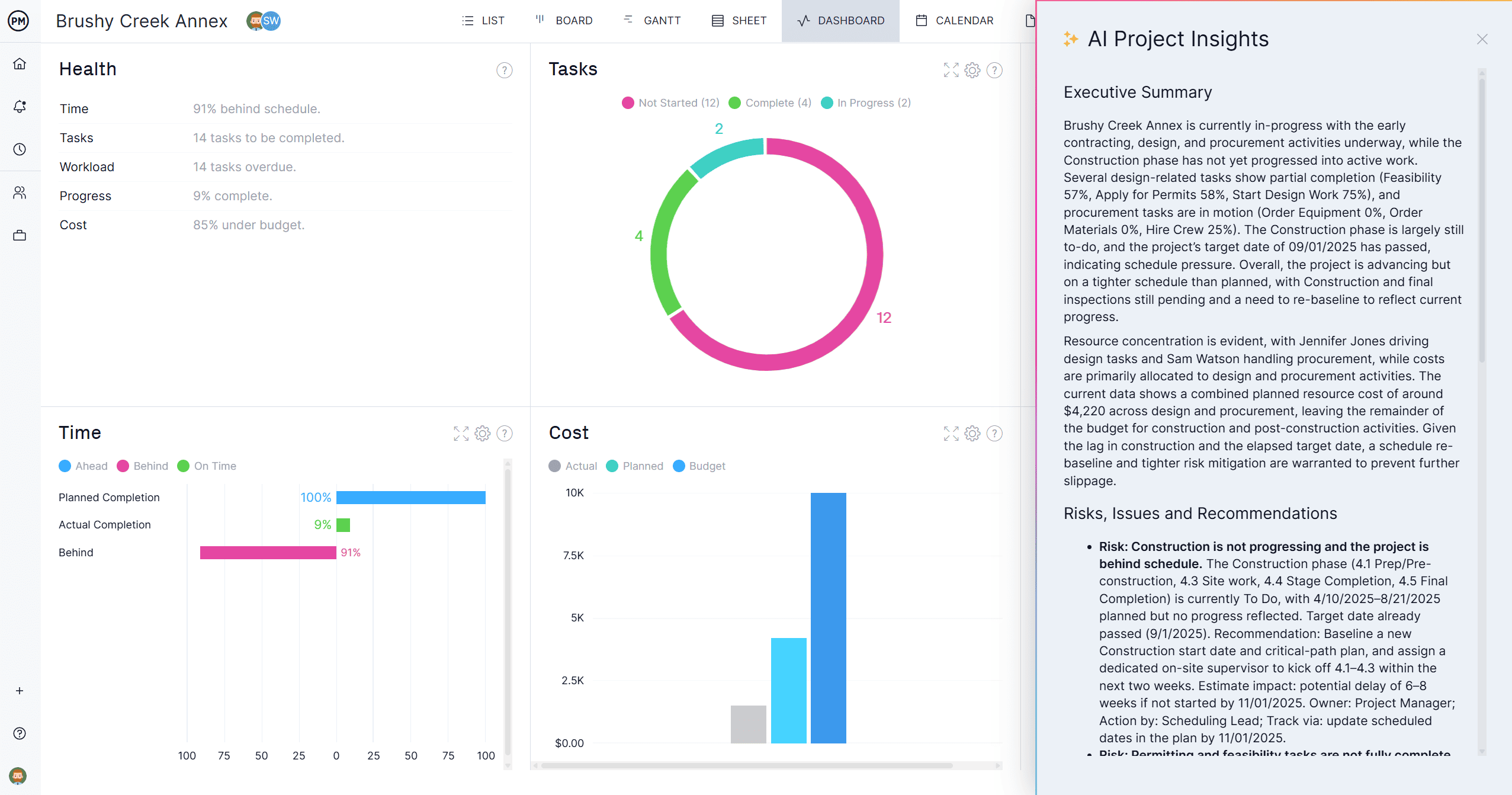
Related Project Management Content
Project specifications are important, but they’re not the only thing general contractors, subcontractors and construction crews need to know. For those interested in learning more about construction project management, the links below introduce key concepts, explain the phases of the project and much more.
- 22 Project Activities for Each Phase of the Project Life Cycle
- Introduction to Project Management: Key Concepts
- How to Make a Project Outline (Example Included)
- The 5 Project Management Phases: A Quick Guide
- 8 Project Plan Examples (Templates Included)
ProjectManager is online project and portfolio management software that connects teams, whether they’re in the office or on the job site. They can share files, comment at the task level and stay updated with email and in-app notifications. Get started with ProjectManager today for free.

